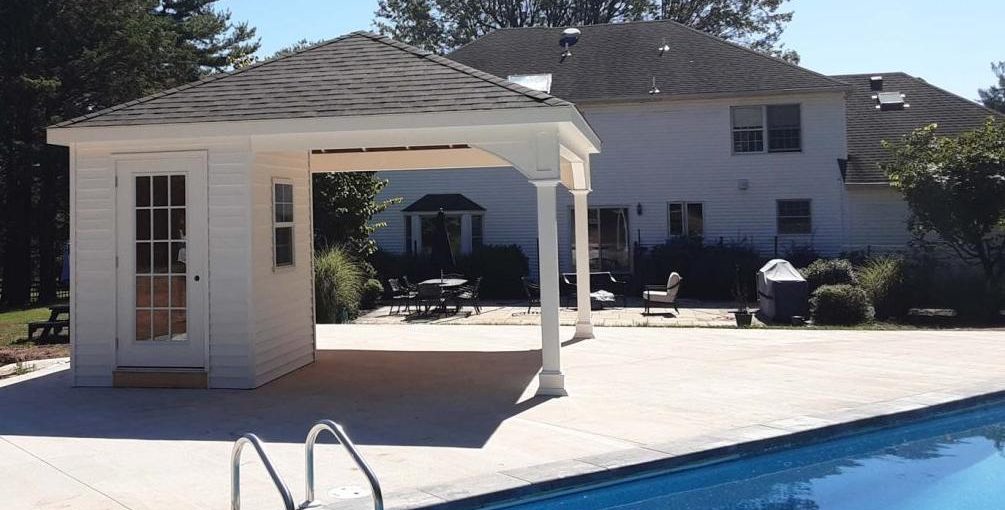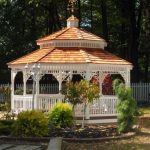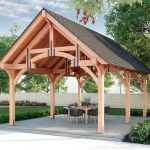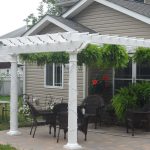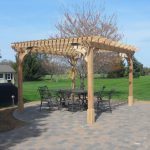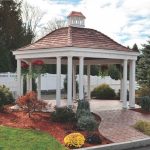Creating a comfortable and inviting outdoor space is essential for enhancing your home’s appeal and functionality. A pavilion kit from Atlantic Outdoors serves as a perfect foundation for your backyard oasis. In this guide, we will explore various ways to personalize your pavilion kit, ensuring that it caters to your unique style and needs while maximizing comfort.
Understanding Your Pavilion Kit
Before diving into personalization, let’s understand what a pavilion kit offers. Pavilion kits are versatile structures designed to provide shade and shelter, making them ideal for outdoor gatherings, dining, or simply relaxing. They come in various materials, including cedar, pressure-treated wood, and vinyl, each offering distinct benefits. Choosing the right material is the first step in creating a comfortable space, as it sets the tone and functionality of your pavilion.
Choosing the Right Location
The location of your pavilion plays a crucial role in its comfort level. You want a spot that offers a balance between sunshine and shade. Here are some tips to help you choose the perfect spot:
- Natural Shade: If you have large trees, consider positioning your pavilion nearby to take advantage of their shade.
- Visibility: Ensure that your pavilion is easily accessible from your home and other outdoor areas, encouraging use.
- Wind Protection: Look for areas that are sheltered from strong winds to enhance comfort during breezy days.
Personalizing Your Pavilion Kit
Once you’ve set up your pavilion kit, it’s time to add personal touches that enhance its comfort and functionality. Here are some effective ways to personalize your pavilion:
1. Comfortable Furniture
Selecting the right furniture is crucial for creating a cozy atmosphere. Consider incorporating the following:
- Outdoor Sofas: Opt for plush, weather-resistant sofas that can accommodate family and friends comfortably. Look for cushions that are both stylish and durable.
- Chairs and Rockers: Adding a mix of chairs and rockers can create a relaxed vibe. Choose options like Mission deep seating kits for a classic touch.
- Tables: A sturdy outdoor table can serve as a focal point for dining or games. Consider a table kit that matches your pavilion’s style.
2. Soft Textiles
Adding textiles can dramatically increase the comfort of your pavilion. Here are a few suggestions:
- Cushions and Throws: Incorporate colorful outdoor cushions and throws. They not only add comfort but also allow you to express your style.
- Rugs: An outdoor rug can define the space and make it feel more inviting. Choose materials that can withstand outdoor conditions.
3. Lighting Solutions
Proper lighting can transform your pavilion into a cozy haven, especially during the evening. Here are some ideas:
- String Lights: Hang warm string lights across the pavilion for a magical ambiance.
- Lanterns: Use lanterns on tables or hanging from hooks for a charming, rustic touch.
- Recessed Lighting: If your pavilion kit allows, consider installing recessed lights for a modern look.
4. Decorative Elements
Personalizing your pavilion with decor can enhance its aesthetic appeal. Consider these options:
- Artwork: Weather-resistant artwork can add character to your pavilion. Choose designs that resonate with your personality.
- Planters: Integrating plants or flowers around your pavilion can bring life to the space. Use planter kits for easy setup.
- Wall Décor: If your pavilion has walls, consider adding decorative panels or outdoor clocks to enrich the environment.
5. Functional Features
Adding functional features can also improve comfort and utility. Consider these additions:
- Ceiling Fans: Installing a ceiling fan can provide a breeze on hot days, making the space more comfortable.
- Screens: If bugs are an issue, consider adding screen panels. They allow you to enjoy the outdoors without the annoyance of insects.
- Heating Options: For cooler evenings, portable outdoor heaters or fire pits can keep your space warm and cozy.
6. Creating Zones
If you have a larger pavilion, consider creating designated zones for different activities. This can help maximize comfort and functionality:
- Dining Area: Set up a dining table and chairs for meals and gatherings.
- Lounge Zone: Create a relaxing area with sofas and chairs for casual lounging.
- Entertainment Space: If you enjoy movies or music outdoors, consider adding a sound system or a screen for movie nights.
Maintenance and Care
To ensure your pavilion remains a comfortable retreat, regular maintenance is essential. Here are some tips:
- Cleaning: Regularly clean the furniture and surfaces to prevent dirt and debris from accumulating.
- Weather proofing: Depending on the material, consider applying weatherproofing treatments to protect against the elements.
- Seasonal Storage: During harsh weather conditions, it may be best to store cushions and textiles indoors to prolong their lifespan.
Embrace Your Outdoor Space
With a personalized pavilion kit, you can create a serene outdoor retreat that reflects your style and enhances comfort. By selecting the right furniture, adding soft textiles, incorporating functional features, and maintaining your pavilion, you’ll have a perfect setting for relaxation, entertainment, and cherished memories.
Ready to elevate your outdoor experience? Explore our diverse range of pavilion kits at Atlantic Outdoors and start designing your dream space today! Whether you’re hosting family gatherings, enjoying quiet evenings, or creating a vibrant outdoor living area, the possibilities are endless. Join our community and unlock the potential of your outdoor space now!
FAQs:
Q: Do I need a permit to build a pavilion?
A: In most cases, you will need a permit to build a pavilion, especially if it exceeds a certain size or has electrical or plumbing components. Permit requirements vary by location, so it’s best to check with your local building department.
Q: What kind of wood is used for pavilions?
A: Common woods used for pavilions include cedar, redwood, and pressure-treated pine. Cedar and redwood are popular for their durability and natural resistance to insects and rot, while pressure-treated pine is an affordable and sturdy option.
Q: How thick should concrete be for a pavilion?
A: The concrete slab for a pavilion should typically be at least 4 inches thick for standard use. If the pavilion will support heavy loads or include outdoor kitchens or fireplaces, a thickness of 6 inches or more may be required.
Q: What is a backyard pavilion called?
A: A backyard pavilion is sometimes referred to as a gazebo, pergola, or pavilion-style shelter, depending on the design. While a pergola has an open roof structure, a pavilion has a solid roof for full shade and protection from the elements.
Q: Can you enclose a porch without a permit?
A: In many areas, you may need a permit to enclose a porch, especially if it involves structural changes, electrical work, or insulation. However, if you’re using removable screens or temporary enclosures, you may not need a permit. Always check local building codes before making modifications.

